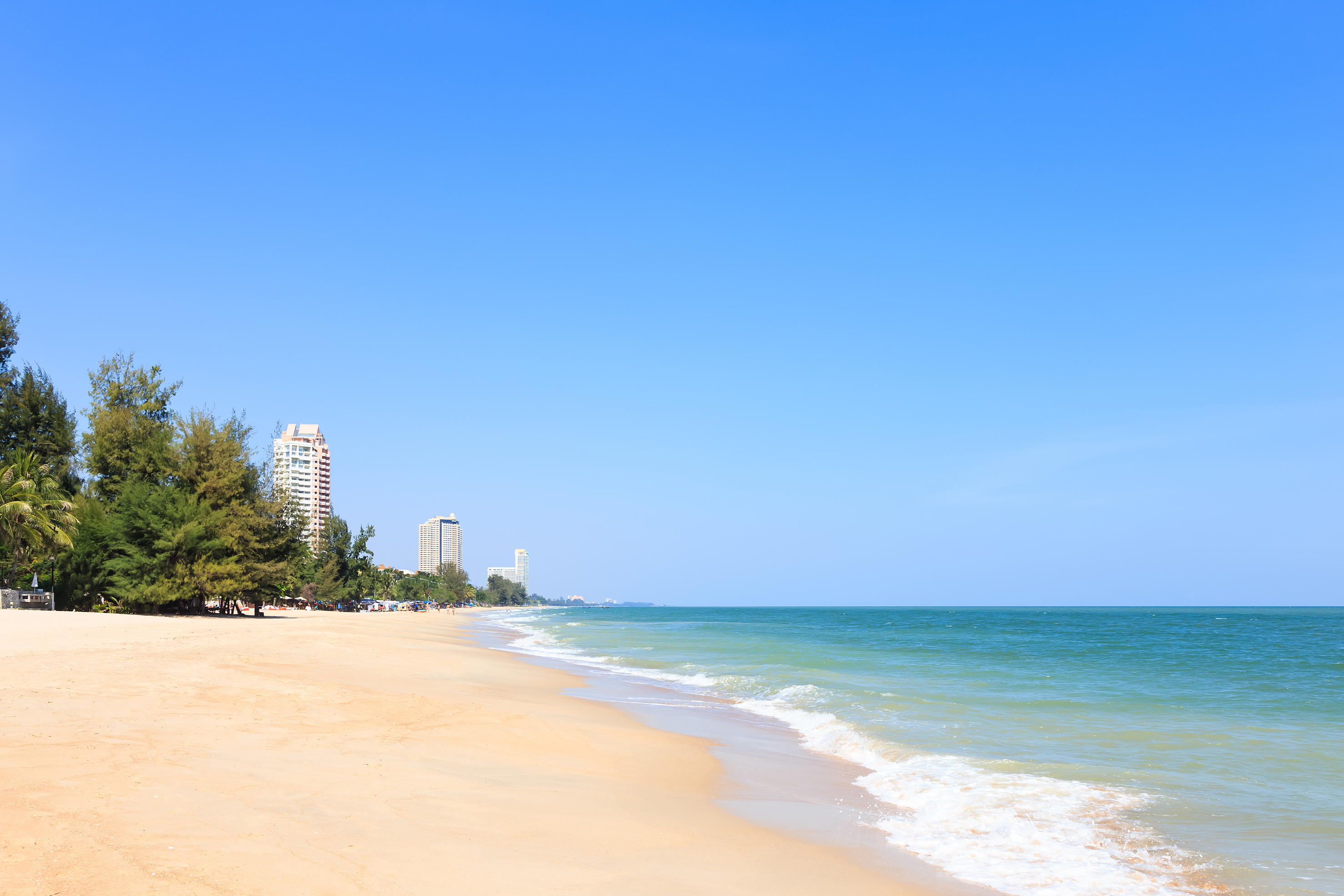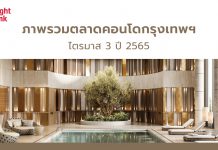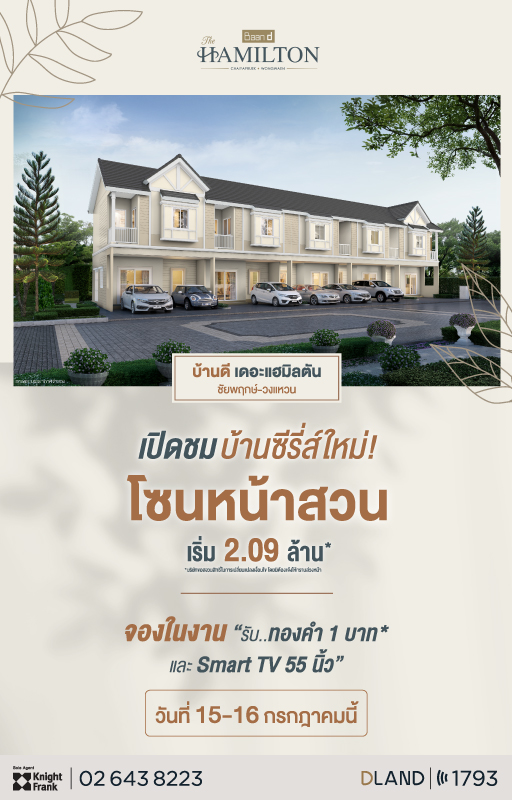According to Knight Frank Thailand’s Research, in mid-2016, the Hua-hin condominium market is recovering from the stagnancy earlier in the year. The market shows a slightly increasing absorption rate and the highlight of the first half of this year was to release the remaining stock from last year. New supply is likely to be limited all through this year. There were only two new projects launched in the first half of 2016; where both projects are located in the Cha-am area. Also, two projects have been halted due to financial problems and political uncertainties, as their main clients are foreigners. From a market survey, we found that some projects with units previously rented out as hotel rooms on a daily rate have either decreased the number of such units or have destined the units for sale. This is in response to negative media attention and the crackdown of authorities on such developers.
Supply
The total accumulated supply located between Cha-am and Khao Tao from 2007 to the first half of 2016 is 23,400 units and sold rate is 78%, rising from 74% at the end of 2015; approximately 5,200 unsold units remain. The majority of remaining stock is located in the Cha-am area, which mostly includes mega projects by listed developers. New supply added in the first half of this year is from three projects: Lumpini Seaview, which is a high-rise building containing 1,130 units; the Collections, a low-rise building containing 308 units; and Sansara retirement condominium project in Black Mountain. The latter targets foreigners aged 50+ years from Sweden and other Northern European countries, the United Kingdom and Australia.
From the below graph, we see that after 2012 the average new supply added to the market is roughly 3,000 units per year, except in 2014 when Thailand experienced political turmoil and a coup d’état. In terms of known future supply, about 300 units from two projects will come on board: Lumpini Place at Huahin Soi 7 and Lumpini Park Beach 2 on Cha-am Beach. Both are expected to be added to the market by the end of 2016.
The majority of supply is located in the Cha-am area, encompassing up to 16,058 units, accounting for nearly 70 percent of the total supply. This is followed by Khao Takiab at 12 percent. Condominiums in Hua-hin and Khao Tao included 1,753 units and 1,593 units, respectively. Hence, both represent the same proportion of the market, at 7 percent. The lowest-supply area is inland located in the even-numbered sois, representing only 5 percent of the total supply. The number of non-seaview units is approximately 2 percent higher than seaview units. But, at the end of 2015, the percentage of non-seaview units was far greater than the percentage of seaview units, roughly 10 percent higher. This change mainly results from one project in Cha-am, which launched 1,130 units in a high-rise building, allowing most of the units to have partial seaviews from their balconies.
Figure 1

Figure 2

Demand
As of 2Q2016, the take-up rate of Hua-hin condominiums is 78 percent, rising from 74 percent at the end of 2015. This is nearly equal to the highest sold rate in the historical data that was 79 percent in 2009 and 2010. The positive performance of demand in the first half of this year implies that the demand is catching up to the supply in the market. Ms. Risinee Sarikaputra, Director, Research and Consultancy, Knight Frank Thailand, said that the average take-up over the last three years is approximately 2,600 units per year. And, the remaining stock now is about 5,200 units so it will probably take a few more years to clear the stock. As such, it is rational to forecast more new supply launching in 2017 than in 2016. It seems 2016 is the year of clearing inventory for developers; the benefits belong to the purchaser via a variety of promotions: special prices, free common fees for one year, etc.
In terms of buyers, the majority are still Thai people living in Bangkok who are looking for a second home in Hua-hin. From the survey, we found that, for some condo projects near Stamford University and the Aviation Training Center, owners can rent out a unit to students for about THB 8,000 to 12,000 per month. This means investment in Hua-hin condominiums is now not only limited to vacation and weekend stays.
As seen in the below graph, the area with the highest take-up rate is Khao Takiab with 94 percent sold; only six percent remains available or 167 units. This is followed by condominiums in the Hua-hin area with a take-up rate of 91 percent. Sold rate of inland and Cha-am condominium is relatively good at 74 percent and 89 percent, respectively. Meanwhile, Khao Tao condominiums show the lowest rate in sales with merely 67 percent sold, resulting in 526 units available. Comparing Khao Tao with other areas, it is the farthest area from Bangkok and it lacks facilities such as restaurants, markets and shopping malls, unlike Huahin and Cha-am. Besides, most of the projects in Khao Tao are grade A condominiums of a large unit size (over 50 square metres) with ocean views. As such, they have high selling prices of about THB 80,000 per square metre, resulting in starting prices of over THB 3 million per unit. Meanwhile, there are a lot of projects offering condominiums with starting prices of under THB 2 million per unit in the Cha-am area, which is a more convenient location.
Figure 3

Selling Price
The current average asking price of seaview condominium units is THB 120,347 per square metre, increasing 4 percent from the end of 2015. The quotation price of seaview units is in the range of THB 80,000 to 130,000 per square metre; the lower price point is likely to be partial seaview units not directly facing the ocean. And, the average selling prices in Hua-hin tend to be higher than the other areas. Non-seaview condominium units are now quoted between THB 55,000 to 80,000 per square metre. Even though some units are non-seaview but if they face the swimming pool inside the project, they can command a higher selling price, especially pool access units. The average selling price for non-seaview unit is THB 68,100 per square metre, a 2 percent increase from the end of 2015.
Figure 4















